-
Posts
243 -
Joined
-
Last visited
Content Type
Profiles
Forums
Blogs
Events
Gallery
Downloads
Store
Posts posted by ISPKI
-
-
I read that a lot of aftermarket chambered mufflers are still loud and produce an annoying resonance inside the cabin. At the moment, I could not care less how loud this setup is, so long as it runs fine and I can drive the car. I can alter it later to quiet it down.
-
After alot of research and comparisons and audio and video clips, I went with the Borla SS Pro Xs. It was 75$~ for the 2.5" center to center. I also ordered 5 of those 3" SS band clamps for about 60$ shipped and 4 feet of 2.5" SS pipe from flowmaster (they had the cheapest pipe, not sure why) for 40$. I also ordered a smaller 2.25" Borla muffler for my civic as the cheap fart can thats on it is getting on my nerves.
I will clean and paint the headers and collector, wrap them in black heat wrap, have the pipe mandrel bent 90 degrees (I am hoping that is enough pipe so that I do not need to buy a separate 90 degree bend), and then seal and clamp the pieces together using the large band clamps and high temp copper permatex. Wish me luck, this will be my first full custom exhaust system.
-
Do you guys use those stainless 3" band clamps? I do not have a stainless steel welding setup so I will have to clamp all the connections. Hence why I am trying to avoid extra connections.
-
Thanks for the responses. I will not be adding a resonator to this system however, trying to keep it as simple as possible and I just dont want to deal with having another connection under there. What do you guys think about Borla? I was looking at their Pro XS mufflers and they seem to sound decent and cost a little less than what I was looking at.
-
Hello Hybridz!
I am gearing up to build my exhaust system for my 77 280z. I have the MSA headers and will be running a short and simple single side exhaust on the driver side. I am having a tough time deciding on a muffler. My system will most likely not be SS and I am only considering chambered designs. Currently, I am trying to decide between Flowmaster Delta 40, Delta 44, and Delta 50. From what I have read, the Delta 40 and 44 are supposed to be pretty loud on the inside of the cabin, whereas the delta 50 is supposed to be quieter all around, but still maintain a deep growl. I have found videos of V8 cars with these mufflers, but how does the L28 sound with them?
-
The real issue that I am running into with the safety hub, is that it is very large. It is about 2x taller than the cheaper maxi blocks and twice as wide - it is larger than the metal cover that the old link holders were bolted to and it will not fit under the hood if mounted ontop of that cover. I moved my battery to the rear of the vehicle and I will most likely build a small platform where the battery tray used to be.
-
That Safety Hub 150 looks nice. Is the one large lug on the left side the lug where you land the hot and are all circuit hot sides tied together with a bus bar? If so, is there a way to remove the bus bar to have separate power inputs? I haven't looked at the Z wiring diagram, are all the fusible links fed from a common power source, and you can just tie it all together?
Yes, the left 14mm nut is the only power input as far as I know and it supplies power to all four high amp MIDI fuses and to the lower AMP ATO/ATC fuses via a 1/8"~ SS bus bar. To my knowledge, it is the only way to supply power to the block and it is sealed into the unit, so, you probably would not be able to remove it/replace it easily. This is a block designed for large marine vessels and carries various certs required for use on coast guard vessels so it probably is not designed to be modified. There are numerous nuts on the right side with "-" markings next to them, but I have no idea what those are for - the way they are configured, it almost seems as though they are for individual sources of power but again, I do not know and the system is sealed water tight so I really cant take it apart. Oh yeah, did I mention it is completely water tight? Gaskets to seal the fuses in and all. I tested it by dropping it in a bucket of water, not a single drop got inside the fuse compartment.
The Fusible links are fed by a single 8 gauge cable, that is split into two 8 gauge cables, which are then each split into two more 8 gauge cables. When I removed all the old wrapping, it really looks like quite the hack job but it seemed to work fairly well. The 8 gauge cable then connected to the "+" on the starter where the battery cable connected I believe. So to answer your question: yes, you can just unwrap the four wires feeding the fusible links and remove them completely, then just run a single, large cable (I used my old 4ga battery cable) to the block. I believe the safety hub is rated for either 250 or 300 amps. It looks to have enough metal in it for more than that though - the bolts are 8mm SS studs with 14mm nuts.
-
Had a little bit of time to work on the Z. I decided to go ahead and hack the old exhaust system off and replace it with headers and single straight pipe side exhaust. I got the MSA 6-2-1 headers from thezstore.com super early, shipment was supposed to arrive next week sometime at the earliest but it ended up arriving Saturday morning. Big thanks goes out to Jeff over there for picking up on the small details of my order and saving me from a huge headache!
I test mounted the headers with all the shiny new hardware and jacked the car up to see how I would run the pipe. This was the first time I actually had the car this high in the air - I could get a really good look at the underbody! Driver side floor and frame looks to be in good shape - just a hole rotting out around one of the rubber plugs. Frame is very clean though, factory teal paint is even still showing on parts of it. Passenger side is pretty bad. Floor has multiple large holes in it, frame is starting to rot out towards the front of the floor. Good thing I have new manufactured floors and rails for it!
Anyways - I ordered heat wrap for the new headers, and about 5ft of metal pipe and a 90 degree bend for it. Just need to figure out what kind of muffler I will run, suggestions are welcome.
I also hooked up my new fuse block, looks pretty darn good compared to my old setup. Uses MIDI fuses to replace the fusible links. It also has ATC/ATO blade slots that I am not using.
Once I get the piping in to do the exhaust system, I will be able to get it back together and see how she runs. I am suspecting that the old stainless hardware may have been contributing to how poorly she was running as all the washers and nuts are warped due to not being able to stand up to the heat/pressure needed at the manifold. I was concerned that I was stripping out the threads in the head when I tightened them down, but I see now that I was just concaving the washers into the openings.
Something that concerns me about the header is that when I bolted the left side down, there was a large gap on the far right side between the flange and the gasket. It was about half an inch before I put the nut on the right side. It smoothed out as I tightened the nuts down but it still seemed odd - the flange is so thick, I dont know how it could have bent except by stresses during manufacturing.
-
-
The issue is that I already removed the intake and exhaust manifold, replaced all the studs, all the hardware, cleaned up everything on the intake, replaced all the gaskets and bolted it all back on. When I took the exhaust manifold off to try and solve some issues, I found the SS hardware was all warped - mostly the washers were being sucked through the holes on the manifold and were starting to look like a shallow funnel.
I picked up case hardened washers and extra thick case hardened nuts with zinc plating from mcmaster, they say they are hardened to grade 8 standards so they should stand up to the pressure and heat. Hopefully my engine will run a little nicer now.
Anyways, headers came in extremely early. Delivery date was Wednesday next week at the earliest, got them Saturday around noon! I was extremely surprised as they had only just left california on Wednesday going Ground. They look to be of good quality, especially for the price. I bolted them on and noticed that the flange was not straight - it had a slight bough in the middle that was creating bout a half inch gap between the head and the flange on one side. I put some of the nuts on the studs and gently tightened them down and the flange straightened out easily. However, I now cannot fit the Y-pipe onto the end of the headers. Looks like the warp in the flange was in between the two 3-pipe groups on the flange.
Now that I have it on the car and I can see how to run the piping, I decided to run just the single 2.5" pip out the side of the car. Dual side pipes would be awesome, but I dont think the stock NA motor is really going to make use of it anyways, the new pipe is already much larger than the factory piping. I will try and make the Y-pipe modular with a flange connection so that I can switch to dual pipes in the future if I really want to. This setup should be much more simple, one muffler, 5ft of straight pipe, and one 90 degree angle. Toss a couple hangars on it and its done. No bending, only a few welds to make, should be super simple.
What do you guys think of powder coating the entire exhaust system? Will the powder coat stand up to the heat put out by the headers? A friend of mine recommended a guy to me who does good and reasonably priced work. He claims the entire exhaust system should only cost maybe 40$.
-
Hey guys. I am expecting my MSA headers for my 280z to arrive early next week and I will be installing them next weekend. I would like to heat wrap them but I have never heat wrapped anything before. My question is: How much heat wrap will it take to wrap MSA 6-2 headers? I am probably going to shoot for the 2" wide stuff.
-
Thanks for the responses! Did you have to install them from underneath the car or were you able to drop them down from the top? I could almost fit the stock manifold with piping still attached out the top so I am wondering if these headers are smaller and would fit without jacking the car up. I have a couple cans of high temp (1300 degree) plastikote paint that I will be painting these with.
As for the dual exhaust - I was planning on running dual pipes out the sides of the car. The pipes would end just behind the doors and in front of the rear tires. My vehicle is not currently lowered, but I probably will never lower it more than an inch or two at most, so I am not too concerned about ground clearance.
What do you guys use for washers when bolting these down? I already pulled out the old rusty studs and helicoiled many of the holes. When I bolted the manifold back on, I made the mistake of putting SS lock washers on underneath the nuts. With the torque needing to be placed on the nuts/studs, the lock washers started to spread apart. What type of washers would you fellas recommend for this? the 18-8 SS washers just deform horribly and I did not even have them on the car for more than 25 miles. Looking at mcmaster - they have two options that I would consider: Extra thick SS washers (about 4 times thicker than standard) and case hardened washers that are the same thickness but are hardened to within class 10.9 specs. Those are also zinc plated.
-
In my ongoing effort to get my 77 280z running well, I decided to replace the extremely rusty exhaust manifold with MSA 3-2 headers. I am planning on running dual exhaust, but I may run single until I get a new transmission. Anyways, what am I in for for the install of these? How do they fit? Does the mating surface need to be milled flat usually? How well will they fit with my AT?
-
Shoot, it looks to be in better shape than my 280z when I purchased it. How the heck does one leave something like this in a farm field!?
-
Thanks, If my phone would cooperate, I would upload the pictures of my new block although I have not fabbed up a good way to mount it. It is significantly higher quality than any of the other fuse blocks that I have seen/used.
-
I have been having an issue with my engine running very rough during idle. Last weekend I tested the vacuum in the intake manifold. When the vehicle first starts, it runs pretty smooth for around 30 seconds to a minute. The vacuum at that time is between 15-16. As it idles, the vacuum will start dropping, abruptly at first and then it will slowly drop until the engine dies. When it initially drops, the vacuum drops down to around 6 or 7 and will bounce around between 5-8 until it dies out completely. I have read online and spoken with some people about this. I have heard that it could be a crushed exhaust pipe restricting flow or something wrong in the cylinders. My next steps are going to be compression testing the cylinders and removing the crushed exhaust pipe after the manifold.
In the meantime, I got my new fuse block and midi fuses, and I relocated my battery to behind the passenger seat and ran most of the cables for it. I increased the cable size from 4 gauge to 2 gauge since the cables are around 6 feet long to reduce resistance. The negative is bolted to the rear of the block, where one of the transmission bolts are located. I also have a short ground from the battery right into the chassis where it is sitting. I would like to know, should I also run a separate ground from the engine to the body? I have the old, shorter ground that was used when the battery was in it's original location but I am not sure that I really need it.
-
Anyone else get a boner when they heard the turbo wind up?
-
So, I was reading a page from Atlanticz's techtips about this. One of the possible causes that they list is that the exhaust could be too restricted which it is (the pipe immediately after the manifold is crushed). I am going to try and get that off until I can find some other ideas to look into. I cant find a vacuum leak anywhere, and it isnt behaving like it has a leak IE: creating a leak makes it run better and GAIN vacuum. My issue follows the details from atlanticz pretty closely (low idle that gradually drops and then dies).
-
-
I just picked up the blue sea systems fuse block and its pretty nice. Everything is stainless on it, the bolts, the mounting hardware, the plates that carry the current. It has slots for 4 midi fuses and several ATO fuses so I was thinking of running some extra lines through it. Everything is also water proof as expected, there is an O ring under the lid that seals the fuses, the bolts and threading for the fuse mounts are sealed in, its pretty nice, even has a label on the lid so you can record which fuses go to what and what their Amp rating is. On top of that, it has slots for spare fuses on the underside of the lid. It is big however, wider than a utility knife and almost just as long. It is also heavy, and expensive - I purchased it for 98$ shipped.
-
Wow, took me three weeks to get the time to test this. I picked up a new vacuum fitting and got the gauge installed. When the vehicle first starts (which is when it seems to Idle pretty good) the vacuum gauge bounces between 15 and 16. After about 30 seconds, it dropped down to being extremely rough. At that point, the vacuum gauge was bouncing between 6 and 8. When I pull the idle set screw completely out (so there is just a giant hole right into the intake) the vacuum gauge bounces up to 17ish and stays relatively stable at that level. This behavior makes me wonder if there is simply no air getting in at idle and that is starving the engine completely. It seems to me that, when the idle screw is removed, shouldnt the vacuum pressure drop rather than increase? That is, unless there is absolutely no air coming in and the engine is just slowly dieing.
-
I have been trying to figure out a good way to stiffen the front air dam while I wait for some hardware to ship. I mocked up an aluminum bracket that seems like it will work. Will post pictures momentarily.
-
Bloz - That is the same design that I have for my vehicle except mine use maxi blade fuses rather than tube fuses. You probably get better engagement with those than with my blades. I think I am still going to spring for some kind of bolt down style though - cant get better engagement/reliability than m8 stainless studs and nuts

-
Title says it all folks. The fusible links and holders in my 77 280z were shot so I went about upgrading it to Maxi Fuses. It was a simple process but the fuse holder is cheap and does not hold the fuses very well which has resulted in my getting stuck a couple times (the alternator fuse is extremely loose and loses connection sometimes). I want to upgrade to something like this midi fuse block made by blue sea systems. It is kind of pricey coming in around 115$ from most places.
I was wondering, what does everyone else use?
I suppose we should include pros and cons so people can make a more informed decision.
What I dislike about my Scosche Maxi Fuse block:
1: The metal is not stainless, looks like chrome plated metal of some kind
2: It no longer holds the fuses tightly
3: It is not weather sealed
4: It does not make a good connection with the inbound and outbound cables - it has set screws that tighten down on the bare cable
5: It's mounting screws are tiny and not stainless - they are all rusting away already
What is good about the Scosche maxi block:
1: It is inexpensive.
2: It is small.


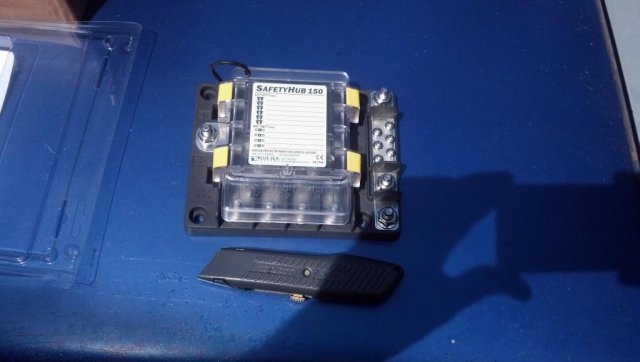
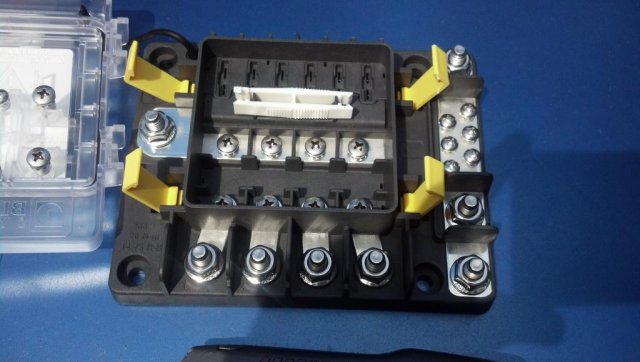

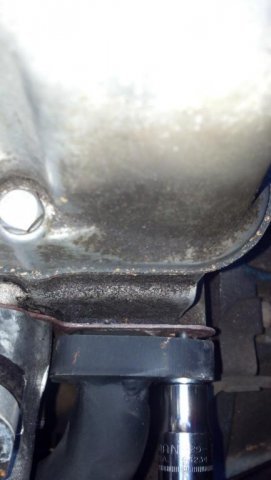
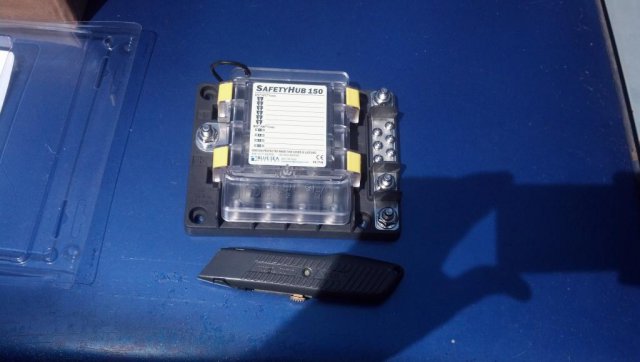
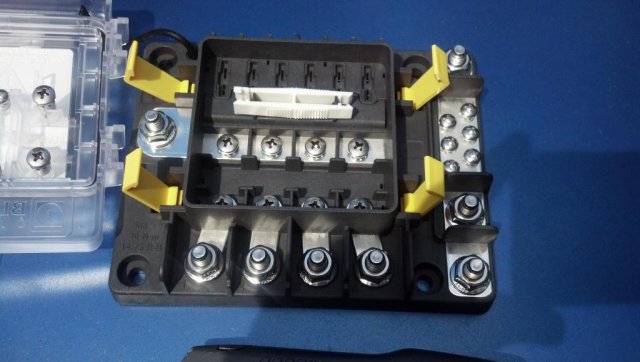
Left key on overnight. What did I burn up?
in S30 Series - 240z, 260z, 280z
Posted
Nothing should have "burned up" if you left the key. It shouldnt be charging or running a whole lot on the car with the engine not being on. You should run tests on your ignition and fuel system before replacing anything.